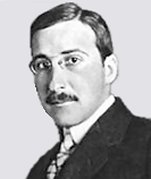|
Prohibited Sexual Behavior and Sexual Violence
|
|
Prostitution: Historical Note 3
|
|
|

|
|
Stefan Zweig
(1881-1942), a brilliant writer, had to flee into exile when Nazi Germany annexed his native Austria. His very popular books, like those of all other Jewish authors, were banned. He managed to complete his memoirs and move to Brazil, but eventually was overcome with despair and committed suicide. The work was published posthumously.
|
|
|
Many people who now bemoan the existence of prostitution do not know – or have forgotten – that it was much more extensive in the “good old days”. Indeed, until early in the 20th century, not only certain infamous sections of Shanghai and other Asian cities, but also the large cities in Europe and the USA had a great many more prostitutes than they have today. As Stefan Zweig wrote in his memoirs about growing up in imperial Vienna:
|
|
“The present generation has hardly an idea of the enormous extent of prostitution in Europe before the World War…. In those days the sidewalks were so busy with women for sale that it was harder to avoid them than to find them. In addition, there were the numerous “closed houses”, the nightclubs, the cabarets and dance floors with their dancing and singing girls, the bars with their hostesses. The female merchandise was openly offered at every hour and at every price, and a man had no more trouble buying a woman for a quarter hour, an hour, or a night than buying a pack of cigarettes or a newspaper.” (Stefan Zweig, Die Welt von Gestern (The World of Yesterday) 1944.
|
|
As Zweig himself already noted, the picture began to change after WW I when women increasingly entered the regular workforce (replacing men who had died in the war) and when a new sexual freedom offered young people more opportunities to meet and to interact openly. This, in turn, made it easier for young men to give up visiting prostitutes. Of course, in the years immediately following the war, the general economic misery at first brought an increase in prostitution, but with the beginning emancipation of women a trend had been set in motion that gradually reduced their dependency, and this trend has continued to this day. The exceptions have always been tied to new economic downturns, for example the Great Depression of the 1930s in the US, or the poverty of Western Europe after WW II, or that of the underdeveloped East European countries now joining the richer West. In spite of these setbacks, however, prostitution in Europe and the US has never reached its former extent again.
|